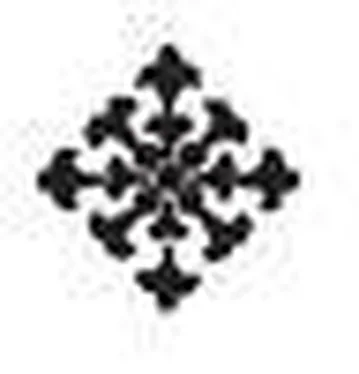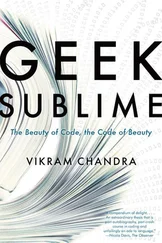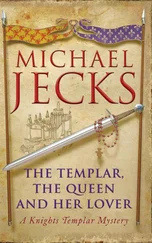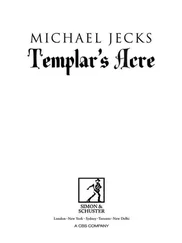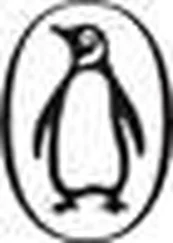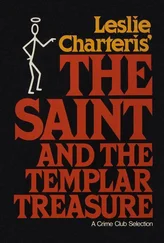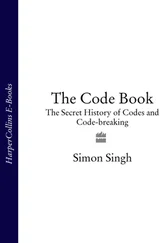C. Palov - Templar's Code
Здесь есть возможность читать онлайн «C. Palov - Templar's Code» весь текст электронной книги совершенно бесплатно (целиком полную версию без сокращений). В некоторых случаях можно слушать аудио, скачать через торрент в формате fb2 и присутствует краткое содержание. Год выпуска: 0101, Издательство: Penguin Group USA, Inc., Жанр: Старинная литература, на английском языке. Описание произведения, (предисловие) а так же отзывы посетителей доступны на портале библиотеки ЛибКат.
- Название:Templar's Code
- Автор:
- Издательство:Penguin Group USA, Inc.
- Жанр:
- Год:0101
- ISBN:нет данных
- Рейтинг книги:5 / 5. Голосов: 1
-
Избранное:Добавить в избранное
- Отзывы:
-
Ваша оценка:
- 100
- 1
- 2
- 3
- 4
- 5
Templar's Code: краткое содержание, описание и аннотация
Предлагаем к чтению аннотацию, описание, краткое содержание или предисловие (зависит от того, что написал сам автор книги «Templar's Code»). Если вы не нашли необходимую информацию о книге — напишите в комментариях, мы постараемся отыскать её.
During the Middle Ages a rumor was born about a mysterious and sacred Ancient Egyptian text. Known as the Emerald Tablet, it was said to contain the secret of creation.
But the greatest secret of all is who wrote it...
Templar's Code — читать онлайн бесплатно полную книгу (весь текст) целиком
Ниже представлен текст книги, разбитый по страницам. Система сохранения места последней прочитанной страницы, позволяет с удобством читать онлайн бесплатно книгу «Templar's Code», без необходимости каждый раз заново искать на чём Вы остановились. Поставьте закладку, и сможете в любой момент перейти на страницу, на которой закончили чтение.
Интервал:
Закладка:
In his teen years, knowledge had been an escape. From the drudgery of mopping up entrails in his uncle’s butcher shop. From the shameful guilt of finding Rock Hudson more attractive than Elizabeth Taylor. In his twenties, while a doctoral candidate at the University of Chicago, knowledge became a gateway. A mind-blowing, consciousness-altering entry to the other side.
And, then, like a mugging in a dark alley, knowledge became a dangerous thing.
It was 1966. Twenty years earlier, the first of the Dead Sea Scrolls had been discovered by Arab Bedouin in the caves of Qumran. The scrolls, consisting of some nine hundred separate documents, had been hidden by a cloistered sect of Jews known as the Essenes. Contemporaries of the Christian Messiah, they’d maintained an impressive library in their secret grotto.
The amazing discovery proved to be the largest cache of biblical texts ever found. Moreover, the scrolls were of immense value to all three religions of the Book, containing writings from the Old Testament, noncanonical Apocryphal texts, and various sectarian manuscripts. All uncensored and unedited. And that worried religious leaders who feared the scrolls might ultimately prove “sacrilegious.” A direct challenge to accepted orthodoxy.
Early on, Mercurius became fascinated with one scroll in particular—the famous Copper Scroll. He’d just completed his doctoral work in ancient and extinct Semitic languages and had finagled a prestigious appointment at the Archaeological Museum in Amman, Jordan, to study the unique metal scroll. Unique, because of all the hundreds of scrolls, it was the only one not written on parchment or papyrus.
Unearthed in 1952, a preliminary translation was made, the Copper Scroll once again proving unique in that it didn’t contain any biblical scripture or commentary. Instead, it contained a detailed list of sixty-four different locations where an immense treasure trove of gold and silver had supposedly been hidden.
Was it any wonder that he’d been thrilled at the prospect of traveling to Jordan to study those twenty-three pieces of copper?
From the onset, Mercurius thought it odd that the scroll had been scribed on copper —of all materials! —and composed in an early square-form Hebrew script with intermittent Greek letters. An avid fan of Sir Arthur Conan Doyle’s, he approached the Copper Scroll like a detective rather than an academic.
When you have eliminated the impossible, whatever remains, however improbable, must be the truth.
And the truth was astounding.
Soon after his arrival in Amman, he uncovered a secret code embedded in the Greek letters that punctuated the Hebrew script. But more surprising than that, the cleverly devised code spelled the name Akhenaton . He knew from his studies of ancient Egypt that the pharaoh Akhenaton had instituted a monotheistic religion that worshipped a sun god called Aten. The plot thickened when he discovered that Akhenaton and the Hebrew patriarch Moses had been contemporaries.
Suddenly, the biblical assertion that “Moses was learned in all the wisdom of the Egyptians” took on new meaning for Mercurius. Could there have been a connection between the ancient Israelites and the monotheistic pharaoh? If he could prove that a link existed, it would certainly shed new light on the origins of Judaism.
Excited by the discovery, he shared his findings with several of his colleagues. Who among those esteemed academics was responsible for the catastrophe that followed, he couldn’t say. At the time, he didn’t much care who was to blame. He was too devastated by the fact that all of his research—twelve months’ worth—was stolen from his small windowless office at the Archaeology Museum and that a single word, punctuated with a bold exclamation point, had been scrawled on the wall next to his overturned desk— Heretic! Uncannily similar to the scare tactic used by the Nazis, who would scrawl the word Juden! on a house or storefront before shipping someone off to Auschwitz.
Afraid that he might be dealing with the same kind of blind hatred, Mercurius heeded the warning and never again mentioned the secret code embedded in the Copper Scroll. The ransacked office bespoke an incontrovertible truth—that human institutions are fundamentally corrupt; education, religion, and government were a sham hoisted upon mankind to deceive us into believing that we have some measure of control over our lives. We earn a degree, we bend a knee, we cast a vote. It was mere stagecraft to camouflage the evil that lurked in our midst. The perpetuation of a three-thousand-year-old deception. One that led all the way back to Akhenaton and Moses.
That long-ago day, as he stood in the small windowless office, it simply sufficed that he’d discovered the heretofore unknown connection between those two disparate figures. Later, many years later, in fact, he would comprehend the significance of that connection. For it was the root of all evil.
As providence would have it, the incident in Armana was significant for another reason—it was the Second Sign that he had been consecrated at birth for a great and glorious purpose. The First Sign had been revealed twenty-three years earlier—on that fateful night when his father, Osman de Léon, and the Kabbalist Moshe Benaroya had been forcibly marched to the train station.
You must always remember, little one, that you were named for the Bringer of the Light.
Do not fear the Light, Merkür. For it will lead you to your life’s purpose.
Another thirty-seven years would pass before the next sign was revealed to him. Thirty-seven years before he learned that his ordained purpose was to extinguish the dark fire that had brightly burned for countless centuries. By summoning a firestorm to douse the flames.
But to do so, he had to find the sacred relic.
Stepping into his study, Mercurius walked over to the window to draw the drapes, the glass reflecting the setting orb in the western sky. He pulled the heavy fabric panels, catching a glimpse of the dormant rose garden just beyond the window, beautifully splashed with bloody streaks.
Again, he considered the metal box that Saviour had seen Caedmon Aisquith carry into the hotel room. The more hidden a thing, the more holy. He smiled, well aware of what the Knights Templar had hidden in their New World colony. He knew because Moshe Benaroya, his father’s milk brother, had exposed the relic’s provenance in explicit detail.
And Mercurius would let the Englishman find it for him.
Still holding the cordless phone, he accessed the speed-dial function. Saviour picked up on the first ring.
“I’ve reached a decision, amoretto. ”

CHAPTER 28
“I give you Arcadia. Heaven on earth.” As they entered a sun-dappled glade, Caedmon expansively gestured to the hardwood and evergreen backdrop. “Indeed, if it didn’t exist, we’d have to invent it.”
For the last hour, guided by Jason Lovett’s GPS receiver, Edie and Caedmon had been traipsing through the Arcadia Management Area, a surprisingly remote and rugged woodland dotted with limpid kettle ponds, vivacious brooks, and lush foliage. Beautiful to behold, it was an unspoiled landscape far different from the wind-swept coastline they’d explored the day before. Although the eastern coast and the western woodland did share something in common: a whole lot of rocks. Big ones. Small ones. They came in every shape and size, and Edie worried they might have trouble finding the so-called Templar stone, the first of two landmarks on Lovett’s map that they hoped to locate. The second landmark was a stone bridge supposedly constructed by a mythic Narragansett man-god known as Yawgoog, whom Jason Lovett was convinced had been a Knights Templar.
Читать дальшеИнтервал:
Закладка:
Похожие книги на «Templar's Code»
Представляем Вашему вниманию похожие книги на «Templar's Code» списком для выбора. Мы отобрали схожую по названию и смыслу литературу в надежде предоставить читателям больше вариантов отыскать новые, интересные, ещё непрочитанные произведения.
Обсуждение, отзывы о книге «Templar's Code» и просто собственные мнения читателей. Оставьте ваши комментарии, напишите, что Вы думаете о произведении, его смысле или главных героях. Укажите что конкретно понравилось, а что нет, и почему Вы так считаете.
